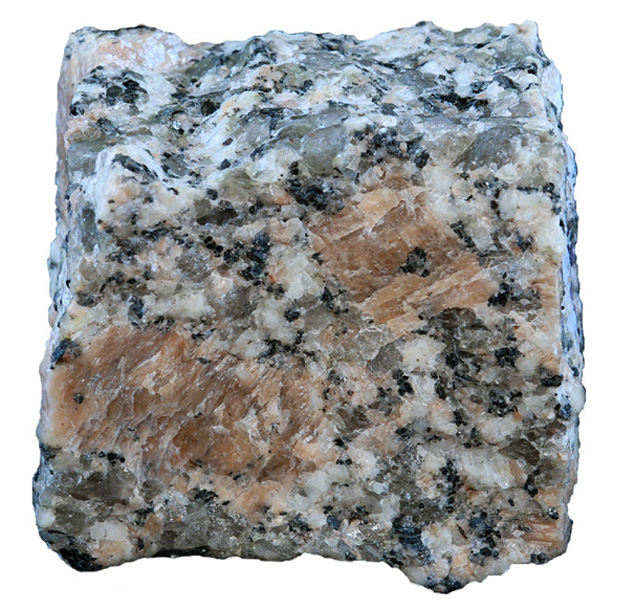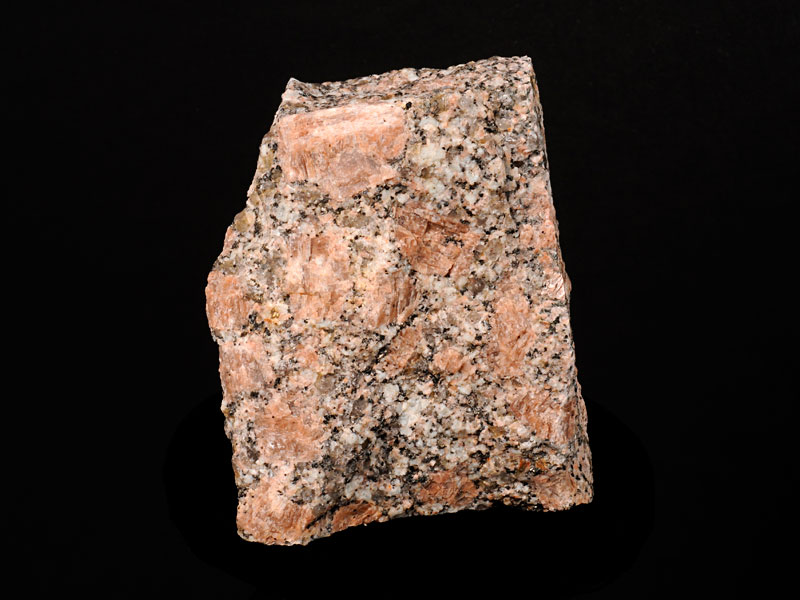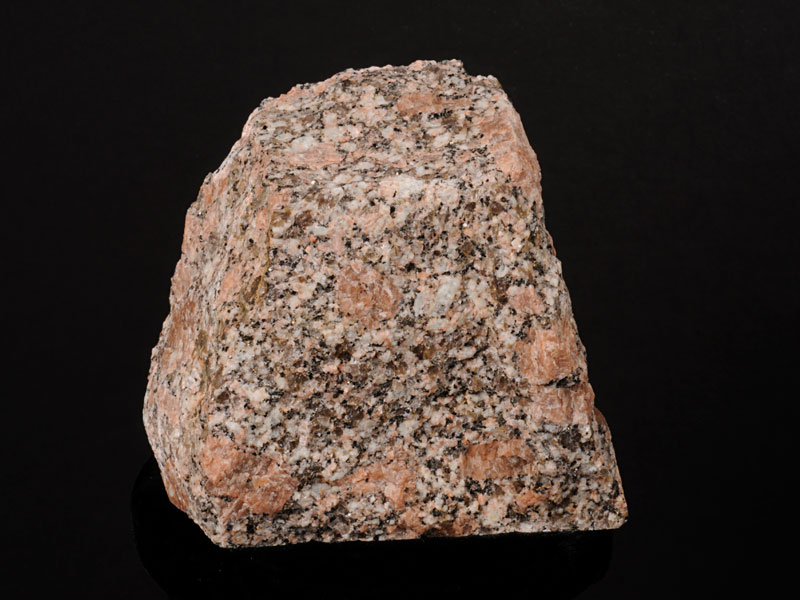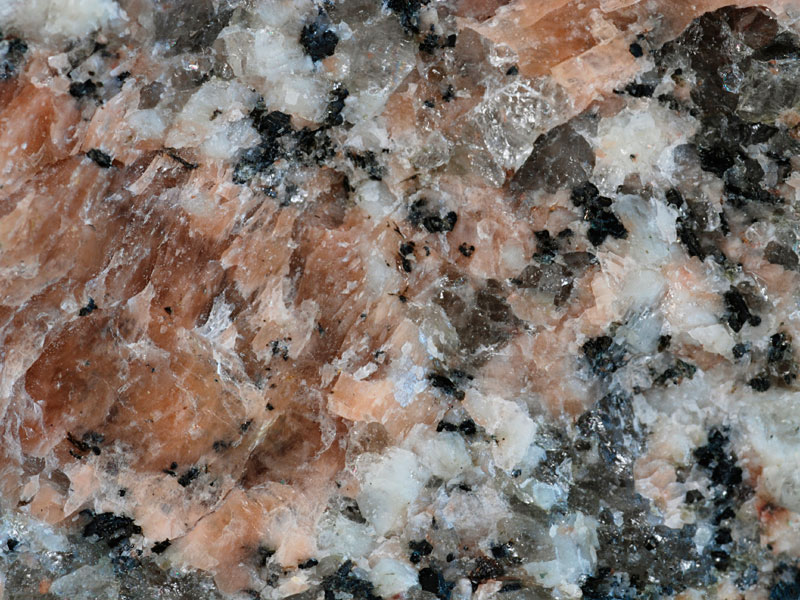
Fact sheet
The Shap granite, a distinctive coarse-grained granite with large pink orthoclase feldspar, was intruded late in the Caledonian orogeny around 394 million years ago. The granite had a complex evolution involving multi-stage addition of basaltic magma to the magma chamber and assimilation of country rock. Much of the magmatic history is recorded in the compositional variations of the feldspar megacrysts. This rock has been widely used as a decorative building stone and our sample was collected from the Shap granite quarry some years ago before the quarry became a geological conservation area where collecting is no longer allowed.
The mineralogy of this granite is relatively simple - biotite, quartz and two feldspars (plagioclase and K-feldspar). Fluorapatite, ilmenite and titanite are also present in minor amounts. The large pink Carlsbad-twinned K-feldspar megacrysts dominate the thin section.
The United Kingdom Virtual Microscope (UKVM) collection consists of igneous, sedimentary and metamorphic rocks from around the UK.
It is intended as a teaching resource, helping to tell the story of the common rock types and how they form, and reflecting the history of the UK at the margins of the continent of Europe. The collection is a series of teaching sets, for example igneous rocks from the North Atlantic Igneous Province and SW England; high-temperature metamorphic rocks from Scotland and low-temperature metamorphic rocks from Wales; and sedimentary rocks, including English limestones and sandstones.









